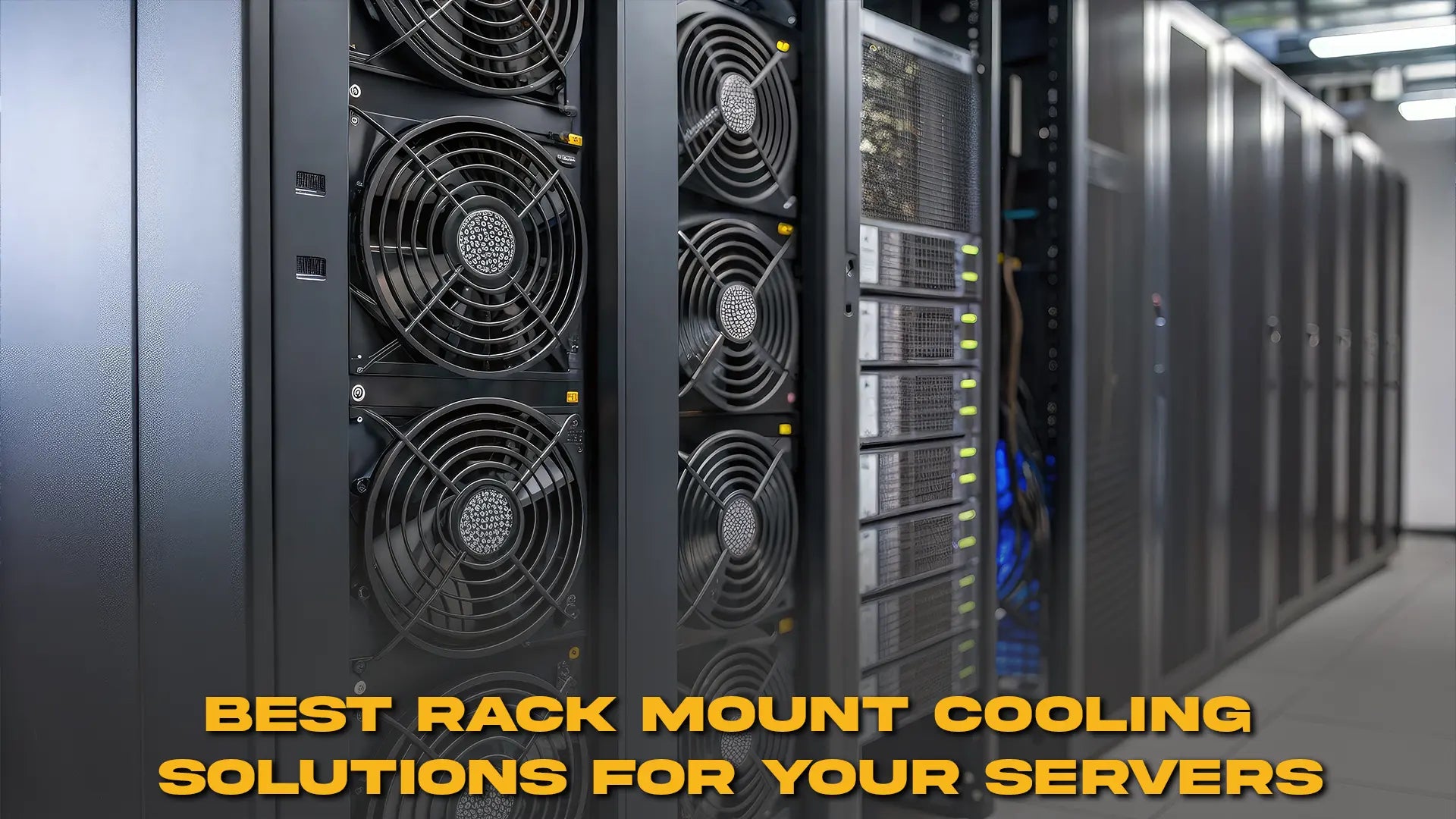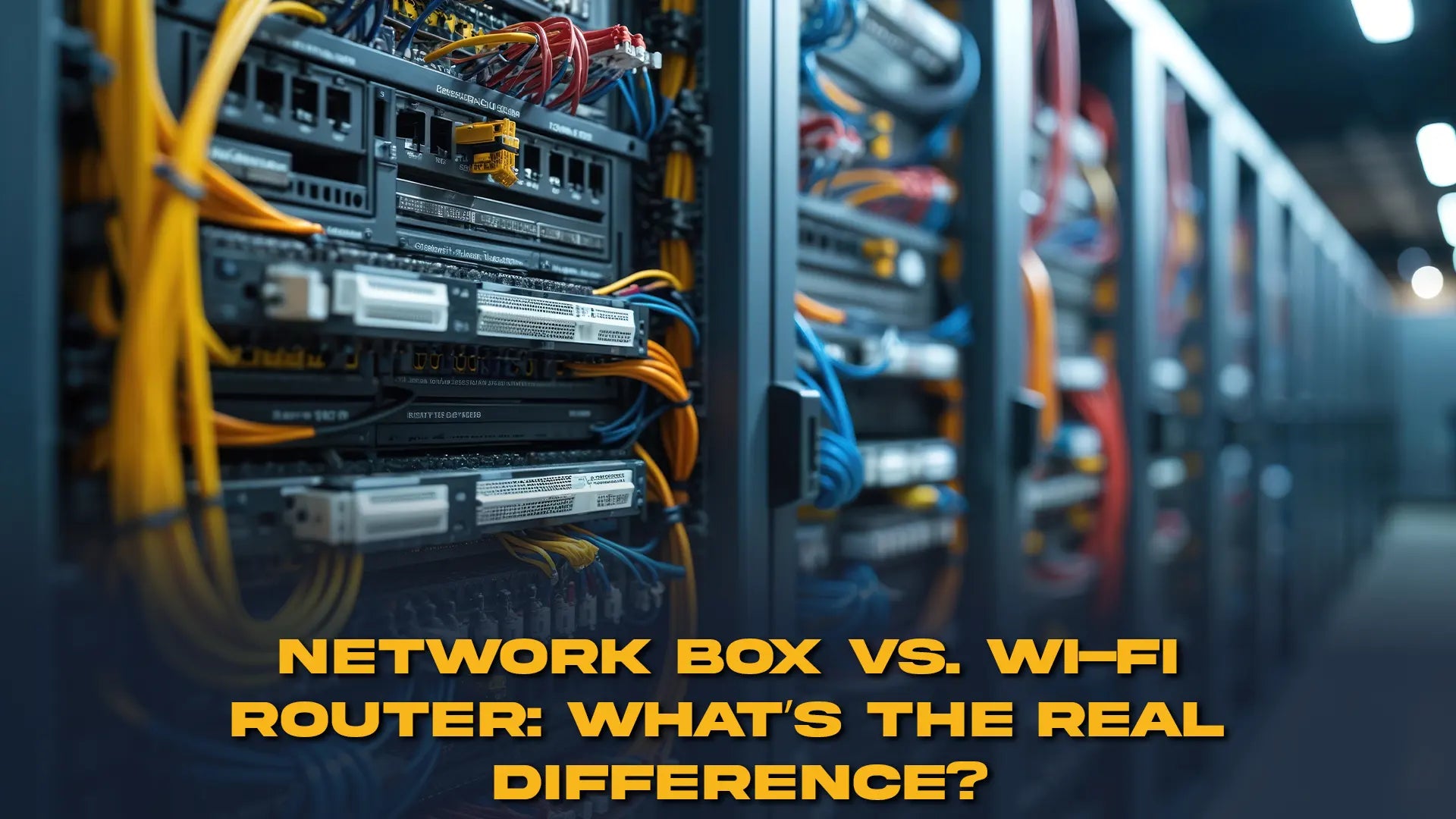Choosing the right server rack for your IT infrastructure is an indispensable step to ensure your equipment remains organized, secure, and adequately cooled. With many options on hand, choosing a server rack cabinet indeed becomes difficult, especially when it has to be decided on within a short period. Small office data center or large scale enterprise environment, it is the correct rack that ensures longevity of equipment and smooth operations.
This guide highlights the critical factors you must consider to be able to buy the best server rack cabinet with confidence and without any time wasting. From the sizes to cooling solutions, and other types of cabinets, this article is geared toward ensuring you make an informed decision within a short time.
Understanding Server Rack Cabinets and Their Importance
It's not just a metal frame; a server rack cabinet is the backbone of your data center setup. These cabinets accommodate servers, networking devices, and other IT equipment, furnishing an environment that is both structured and secure. Having faced a dilemma in cabinet selection, consider the effect an improper choice can have on the physical organization and even the performance and lifetime of your hardware. An ideal rack increases temperature control, warding off any threat of unauthorized access and making maintenance easier.

Businesses often overlook the importance of selecting the right server cabinet for their infrastructure. Its design, cooling system, and available space directly impact the overall efficiency of your data center. Spending time in the planning phase to choose the ideal server rack cabinet can definitely help you avoid costly downtimes and hardware failures.
While looking for a server rack cabinet, you will see that there are many types, such as the open frame, enclosed racks, wall mounting racks, etc. Each will serve a different purpose depending upon your environment and equipment requirements. Knowing this beforehand will save you the scenario of last minute changes and setting delays.
Server Rack Size Guide: Picking the Perfect Dimensions
Picking the right size is among the most crucial considerations in selecting the best server rack for present needs. Server racks come in heights, widths, and depths with all of these dimensions traditionally measured in rack units, where one unit measures 1.75 inches. Common heights range between 12U and 48U or higher. A big factor that influences selection is the right sizing so that all your gear will comfortably fit within the rack without wasting space or overcrowding.
Besides height, depth and width should also be considered for your rack. Depth varies depending on the equipment, and you need a rack that can at least accommodate the largest devices side by side with enough space for cables and airflow. Rack widths are usually around 19 inches, but larger sizes are available for those needing special machines. Overlooking these dimensions can lead to installation difficulties and poor airflow.
Some practical advice would be to thoroughly assess all your current and planned equipment before making your purchase. Use a server rack size guide to determine how many rack units each device requires and plan for future expansion. This approach will save you from costly upgrades or replacements down the road and quickly help you narrow your options to the most suitable rack for your needs.
Cooling Solutions for Server Cabinets: Keeping Your Equipment Safe
Generally, one of the major challenges in any data center setup is the heat generation by the servers and networking equipment. In the absence of proper cooling, equipment starts to heat up, causing hardware failures and downtime. Therefore, while selecting the best server rack, the integrated server cabinet cooling solutions need to be considered.

There are several options available today for cooling the server racks apertured or perforated doors, active internal fan solutions, or liquid cooling compatibility. Perforated or mesh doors allow the best airflow enabling the air conditioning systems to cool well. Some cabinets would provide active cooling where internal fans would provide air circulation inside the cabinet. The cooling method to select would depend upon your server density as well as the ability of the room to provide cooling.
Other than internal rack cooling, you need to evaluate your entire data center airflow strategy. For example, placing hot aisle/cold aisle containment can increase cooling efficiency dramatically. Combining these strategies with the right server cabinet cooling solutions helps ensure your equipment remains at optimal temperatures, reducing the risk of overheating and extending server lifespan.
Security and Accessibility: Protecting Your Data and Hardware
Security is one very important consideration for the best choice of server rack cabinet. Access to the servers needs to be physically controlled to protect sensitive data and prevent tampering. Most server racks have provisions for lockable doors and side panels. If speed of access is paramount, then choose cabinets with locking mechanisms that allow maintenance personnel to perform their tasks quickly.
Besides security, accessibility is also essential. Technicians need to access the equipment quickly and conveniently to install, troubleshoot, and upgrade. Look for racks with removable side panels, sliding rails, and cable management features. These also assist in protecting your equipment while creating efficiencies in workflow.
A careful balance between security and accessibility is vital. If the server rack cabinet locks securely but opens effortlessly when needed, it will keep the data center fully operational and secure during times when it is counted against time and frustration.
Data Center Server Rack Types: Choosing What Fits Your Environment
Data centers and their environs exhibit a fascinating diversity. Studying the various types of data center server racks will allow you to choose the best for your environment: the two most common ones being the open frame type and the enclosed server cabinet.

Open type racks work well in environments where rooms are well cooled and secure, and where access and cable management are key priorities. These racks provide good airflow but offer minimal physical security. Enclosed units offer decent protection against dust, noise, and unauthorized access, making them valuable in shared spaces or areas lacking proper control.
Wall mounted racks also provide a great space saving solution for small offices or remote locations. They hold fewer devices but provide flexibility where floor space is minimal. Identification of the physical and security requirements of your environment will help you in picking out a rack type that will perfectly complement the design of your data center.
Material and Build Quality: Ensuring Durability and Stability
The best server rack's build quality varies in durability and performance. Steel or aluminum makes up most server racks with durable frames that can carry heavy equipment. Using quality materials helps in minimizing vibrations that might otherwise eat away into sensitive electronics over time.
Then, consider powder coated finishes that resist corrosion and wear. Mounting rails should be reinforced, along with the base designed to be stable, so that it never tips over. Stability is, especially, required for earthquake prone areas or even in locations having a lot of foot traffic.
While it may seem expensive at first, a good server rack cabinet repays your outlay through years of dependable service. A strong and durable rack keeps your precious hardware safe and makes sure that your data center stays secure and efficient.
Cable Management Features: Keeping Things Organized and Efficient
Cable management is often overlooked but should definitely be taken into account when choosing a server rack. Organized cables improve airflow, reduce downtime, and make troubleshooting easier. Opt for racks that include cable routing accessories like hooks, trays, and Velcro straps.
Cable management also protects cables from accidental unplugging or damage. Most modern enclosures come with built in channels and panels that help keep power and data cables separated to reduce noise and clutter.
In all seriousness, good cable management can provide a great enhancement to the overall aesthetics of your data center while at the same time making operational performance more efficient. The easier it is to trace and manage cables, the faster you can work on maintenance or upgrades for your systems.
Budget and Scalability: Planning for Now and the Future
When choosing a server rack, it is important to consider price along with future scalability to make a smart decision. Avoid buying the smallest and cheapest rack that barely fits your equipment today because this will cost you a major replacement and downtime fee.
Plan for the future by assessing your growth projections and looking into racks with modularity. Some cabinets enable you to add more mounting rails or cooling accessories for when your needs grow. The flexibility guarantees that you won't have to change your entire rack setup again in a short period.
Wise budgeting implies getting a server rack cabinet that fits your immediate needs but still allows flexibility for growing businesses. This foresight will save you both money and time while making your data center efficient yet flexible.
Making Your Decision Quickly and Confidently
Taking less than one minute to choose the best server rack cabinet requires a sharp view of current and projected future needs. One must understand rack size, cooling, security, types of racks, build quality, and cable management in order to eliminate choices swiftly, without compromising on quality.
Using this server rack size guide and other related guidelines will give you systematic options for review. Never rush for the cheapest product; instead, invest for a server cabinet that has durability and scalability to allow for efficient infrastructure over time. Consequentially, strategic thinking will save time and money in the long run while keeping the data center running efficiently.
After all, the correct server rack configuration constitutes the proper groundwork for a dependable IT environment. Choosing prudently today means less inconvenience and better realization tomorrow.




Leave a comment
This site is protected by hCaptcha and the hCaptcha Privacy Policy and Terms of Service apply.